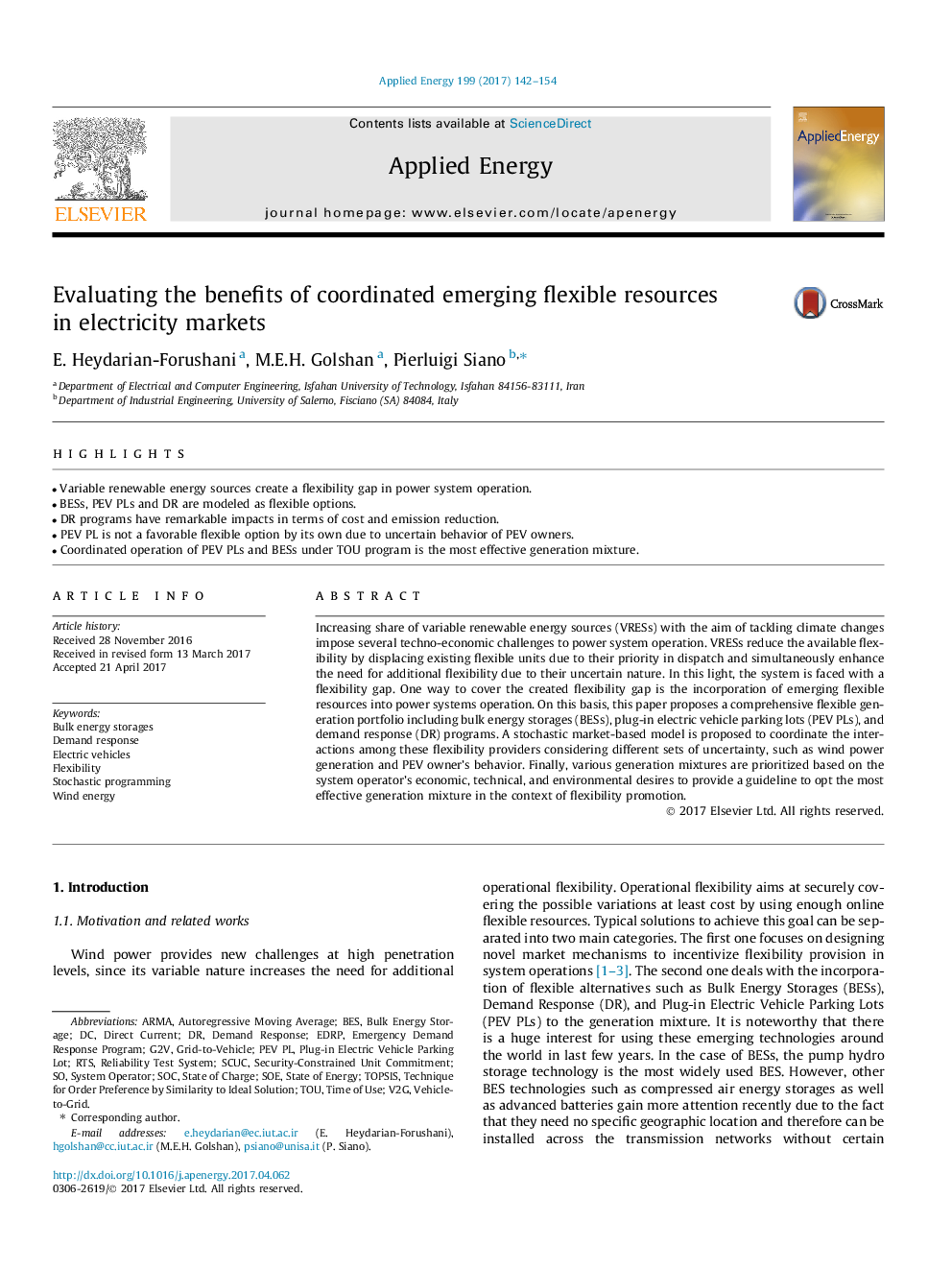| Article ID | Journal | Published Year | Pages | File Type |
|---|---|---|---|---|
| 4916181 | Applied Energy | 2017 | 13 Pages |
Abstract
Increasing share of variable renewable energy sources (VRESs) with the aim of tackling climate changes impose several techno-economic challenges to power system operation. VRESs reduce the available flexibility by displacing existing flexible units due to their priority in dispatch and simultaneously enhance the need for additional flexibility due to their uncertain nature. In this light, the system is faced with a flexibility gap. One way to cover the created flexibility gap is the incorporation of emerging flexible resources into power systems operation. On this basis, this paper proposes a comprehensive flexible generation portfolio including bulk energy storages (BESs), plug-in electric vehicle parking lots (PEV PLs), and demand response (DR) programs. A stochastic market-based model is proposed to coordinate the interactions among these flexibility providers considering different sets of uncertainty, such as wind power generation and PEV owner's behavior. Finally, various generation mixtures are prioritized based on the system operator's economic, technical, and environmental desires to provide a guideline to opt the most effective generation mixture in the context of flexibility promotion.
Keywords
RTSTOUG2VSOEV2GState of energyBESARMAWind energyFlexibilitysystem operatorStochastic programmingSecurity-constrained unit commitmentTechnique for Order Preference by Similarity to Ideal SolutionDC, Direct currentVehicle-to-gridElectric vehiclesState of chargeTOPSISTime of useSOCGrid-to-VehicleAutoregressive moving averageDemand response
Related Topics
Physical Sciences and Engineering
Energy
Energy Engineering and Power Technology
Authors
E. Heydarian-Forushani, M.E.H. Golshan, Pierluigi Siano,
